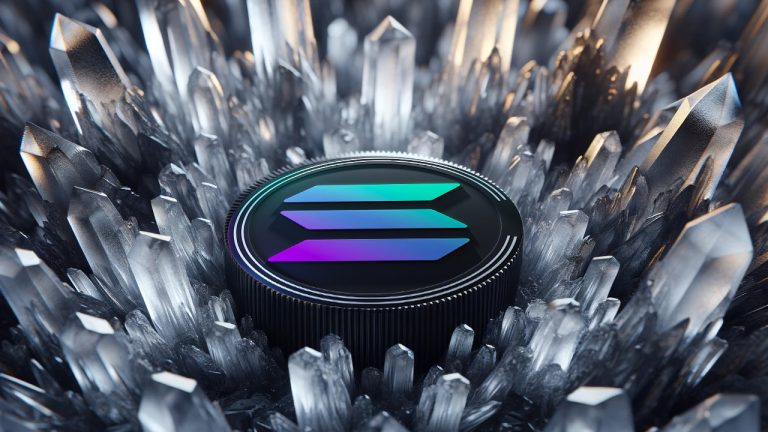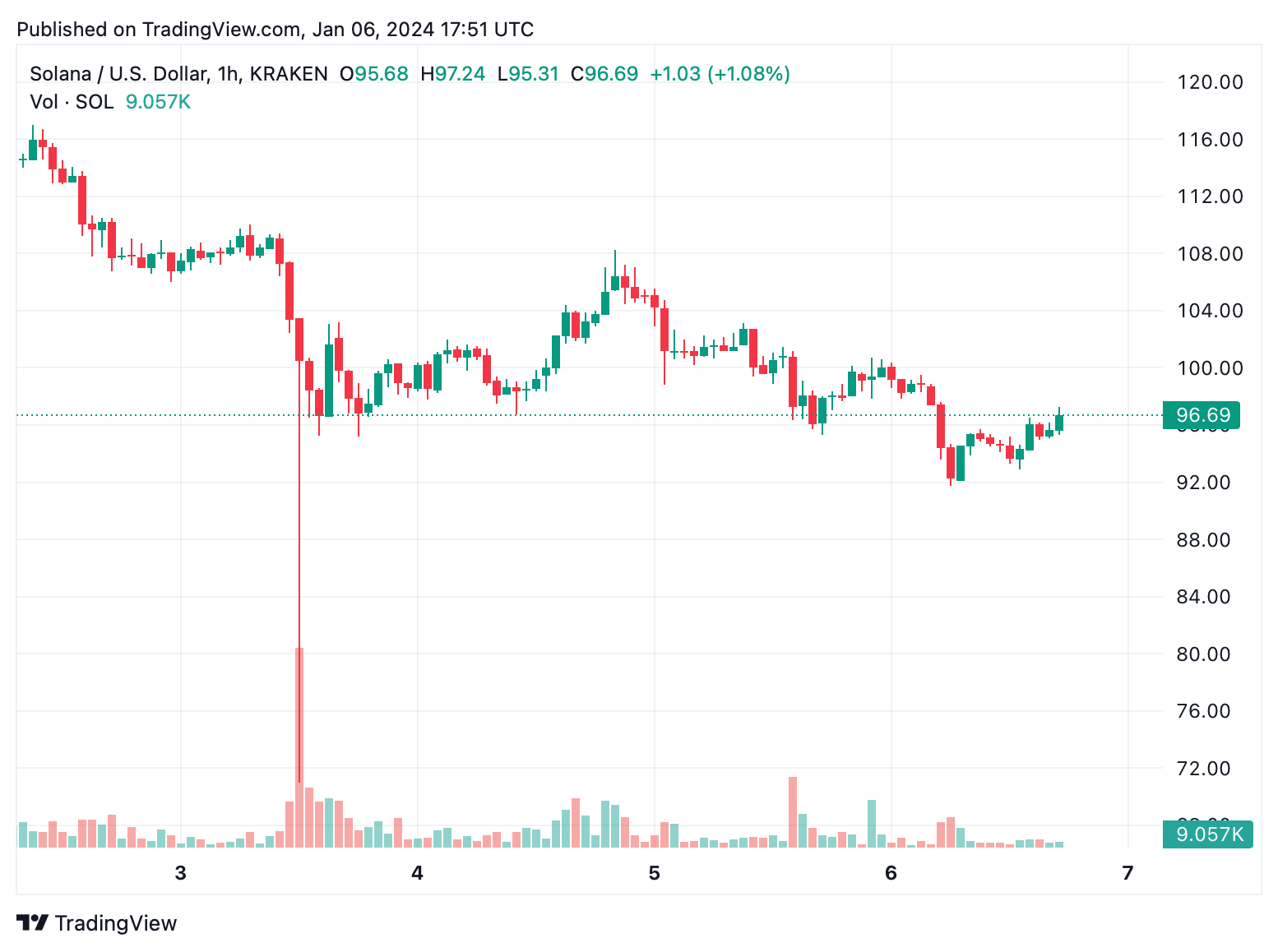
During the initial week of 2024, the digital currency solana experienced a sharp decline, shedding over 6% in value. This downturn has relegated the crypto asset to the fifth position in market rank, as it oscillates beneath the $100 threshold on Saturday, Jan. 6, 2024.
2024 Brings Chill to Solana’s Market Performance
After surging by over 700% in 2023, solana (SOL) has experienced a cool-off period. In the last week, SOL dipped slightly more than 6%, yet it still boasts a 46% increase against the U.S. dollar over the preceding month.
As of Jan. 6, 2024, SOL’s intraday value fluctuated between a high near $100 and a low of $92.23, trading at $96.75 per unit at 12:51 p.m. Eastern Time. Notably, SOL commands significant influence in South Korea’s market, trading at $99 on Upbit and $98.81 on Bithumb, surpassing the global average of $96 per unit as noted on aggregate market sites.

Tether (USDT) is SOL’s primary pair, constituting over 67% of all solana trades, followed by the U.S. dollar and Korean won, contributing 14% and 8% of SOL’s trade volume respectively, according to data from cryptocompare.com.
Behind them, BTC and the stablecoin FDUSD represent 3.35% and 2.68% of SOL’s trading activity. Currently, Solana ranks fifth in global trade volume, reaching $2.287 billion in the last 24 hours, though this figure has dipped over 30% from the previous day.
SOL’s market capitalization stands at $41.30 billion, accounting for 2.387% of the total $1.73 trillion crypto market value. Despite a commendable 621% rise over the past year, SOL is still trailing more than 63% below its peak of $259 per unit on Nov. 6, 2021.
As the crypto asset navigates the volatile market, its future trajectory remains uncertain, leaving investors to wonder if it will continue as a leading performer in 2024.
What do you think about solana’s market performance this week? Share your thoughts and opinions about this subject in the comments section below.
from Bitcoin News https://ift.tt/h6gWVl0
Comments
Post a Comment